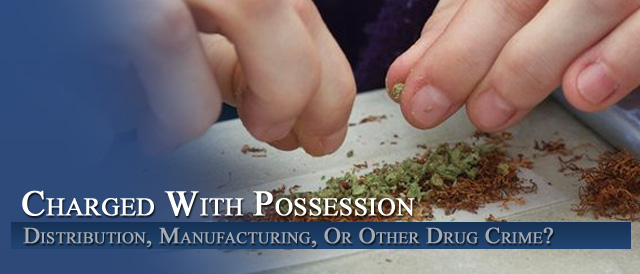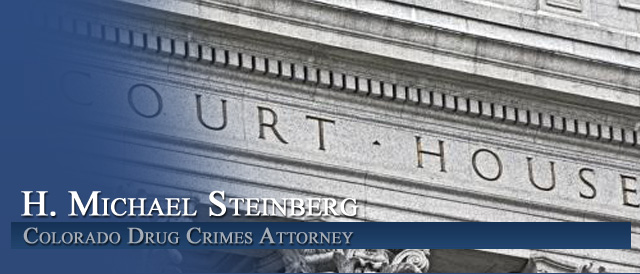




Part II – Understanding Colorado Criminal Law -The Authority of Colorado Police and Law Enforcement – QUESTIONING OF A SUSPECT AFTER THE STOP
by Colorado Criminal Defense Lawyer – for the Defense of Those Charged with All Crimes in Colorado
My goal here is to assist the average interested person in Colorado to understand the enforcement of Colorado Criminal law and procedure.
This effort will be in FIVE PARTS – This SECOND PART addresses Colorado Laws targeting the questioning of a suspect after he/she has been stopped.
Can the stopped suspect be questioned?
Threshold Inquiries and Miranda Warnings
Threshold inquiries are questions posed to a person about his identity and an explanation of his actions. The courts have ruled that Miranda warnings are not required during stops. Berkemer v. McCarty, 104 S. Ct 3138 (1984). People v. Johnson, 671 P.2d 958 (Colo. 83).
Normally, the first few questions the police officer’s ask the suspect will concern his identify.
If the suspect refuses to give the police officer his name and/or address or the police officer has reasonable doubts whether the name or address he gave the police officer is correct, the police officer may ask him to show the identification.
If he refuses, the police officer cannot order him to give them to the officer nor go into his pockets for them. Failure to identify oneself to a police officer’s satisfaction is not in itself a crime. There is no Colorado law that requires a person to produce his driver’s license for identification purpose if he is not operating a vehicle. C.R.S. 16-3-103 states that (in non-traffic cases) an individual must show “identification if available.”
In traffic cases, C.R.S. 42-2-115 requires that an operator display his driver’s license upon demand by a peace officer who reasonably suspects that the operator is committing, has committed, or is about to commit a violation of article 2, 3, 4, 5, 6, 7, or 8 of title 42. ( the Traffic Code)
An unanswered question is whether an officer may retrieve a wallet (that is visible as a bulge) from the pocket of a stopped suspect, who denies having any identification “available.” Some jurisdictions have permitted this, while others have condemned this practice. There are no Colorado court cases on this point.
The Second Threshold Inquiry Question – Focused Questioning
If the police officer’s suspicions are not laid to rest or are heightened, the police officer may try to question the suspect more directly about his involvement in the suspected criminal activity.
However, once the police officer’s questioning moves beyond brief threshold inquiries, there is a point at which the suspect’s Fifth Amendment right to silence becomes an issue. This occurs when the police officer’s questioning becomes sustained or insistent, focuses on the suspect as the perpetrator of a crime, and has as its purpose obtaining incriminating statements from the suspect.
At this point, the police officer should attempt to make sure that the suspect answers the police officer’s questions voluntarily. The police officer should consider telling him that he does not need to answer the police officer’s questions and stating or repeating that he is not under arrest. During this type of questioning, if the suspect indicates in any way at any point that he does not want to answer the police officer’s questions, the police officer should stop the police officer’s interrogation.
His desire to remain silent is not a factor that supports either reasonable suspicion or probable cause.
However, at this point, the police officer may only do one of the following:
a. The police officer may allow the suspect to leave.
b. The police officer may change the line of questioning by acknowledging his right to silence and asking if he would be willing to answer some different questions. If the police officer later returns to the questions he did not want to discuss, response must be voluntary – not coerced.
An explicit statement that the suspect does not have to answer and that anything he says may be used against him is advisable and may be legally necessary.
There are times when the officer may decide that, even though the person is not under arrest, the case and situation are so critical that the officer believes he/she must question the suspect in a manner similar to a station house interrogation (the suspect clearly is not free to leave, the police officer’s questioning is intense and insistent, more than one officer may be involved in the questioning, or the police officer’s purpose clearly is to elicit a confession or other crucial information from him that will allow the police officer to formally arrest him) … under these circumstances the police officer has established a custodial interrogation situation and the full Miranda warnings are necessary.
An invalid stop or arrest may require the suppression of evidence obtained thereafter. Brown v. Illinois, 422 U.S. 590, 95 S.Ct. 2254, 45 L. Ed.2d 416 (1975); People v. Hillyard, 197 Colo. 83, 589 P.2d 939 (1979).
In People v. Lowe, 616 P.2d 118, 123 (1980), the Colorado Supreme Court stated: “Not all evidence is ‘fruit of the poisonous tree’ simply because it would not have come to light but for the illegal actions of the police. If the evidence to which the objection is made has been produced by exploitation of the initial illegal police action, the evidence is tainted and inadmissible. But if the evidence has been obtained by means sufficiently distinguishable to be purged of the primary taint, the evidence is admissible. . . Thus, if passage of time has caused the connection between the initial illegal police action and the offered evidence to become so attenuated as to dissipate the taint, the evidence is admissible.”
In Brown v. Illinois, 95 S.Ct. 2254 (1975), the U.S. Supreme Court announced three factors to be utilized in determining whether a preceding illegal stop rendered inadmissible a subsequently obtained inculpatory statement given following Miranda warnings:
“The temporal proximity of the arrest and the confession, the presence of intervening circumstances,. . . and, particularly, the purpose and flagrancy of the official misconduct.”
When the “fruit” of an invalid stop is a consent to search, a court will suppress the fruits of the search if the consent is not voluntary or when previous and continuing police misconduct has “tainted” the consent and there is a “causal connection” between the misconduct and the consent.
An Example
Based upon an anonymous tip, officers stop Garcia’s vehicle and he gives them consent to search for drugs. The court suppresses the drugs that were found because it rules that there was no reasonable suspicion for the stop and the consent was a direct “fruit” of the stop. The consent to search was therefore invalid. People v. Garcia, 789 P.2d 190 (Colo. 90).
Developing Probable Cause to Arrest During a Stop – Ordering All Occupants Out of a Stopped Car
If the police officer does have reasonable suspicion of involvement in criminal activity the police officer may detain them for proof of identification and an explanation of their actions.
This is the Colorado case of People v. Sutherland, 886 P.2d 681 (Colo. 94). People in the Interest of H.J., 931 P.2d 1177 (Colo. 97)
However, the police officer must always have articulable reasons to fear for the police officer’s personal safety before the police officer may frisk the vehicle or pat-down any specific occupant.
If the police claim that they see an occupant make some “furtive movement” (e.g., bend over and reach under the car seat) and then claim a concern for the officer’s safety, the court’s may permit – if the officer is believed, a frisk of the occupants. A search under that seat in the area where the suspect reached may also be legally permissible.
This is the Colorado case of People v. Altman, 938 P.2d 142 (Colo. 1997).
The police officer’s search must be limited to areas where a weapon could be hidden. Keep in mind that this is justified on “stop and frisk” principles. Different considerations apply to searches for evidence.
Fruit of the Poisonous Tree Doctrine
An invalid stop or arrest may require the suppression of evidence obtained thereafter. Brown v. Illinois, 422 U.S. 590, 95 S.Ct. 2254, 45 L. Ed.2d 416 (1975); People v. Hillyard, 197 Colo. 83, 589 P.2d 939 (1979).
In People v. Lowe, 616 P.2d 118, 123 (1980), the Colorado Supreme Court stated: “Not all evidence is ‘fruit of the poisonous tree’ simply because it would not have come to light but for the illegal actions of the police. If the evidence to which the objection is made has been produced by exploitation of the initial illegal police action, the evidence is tainted and inadmissible. But if the evidence has been obtained by means sufficiently distinguishable to be purged of the primary taint, the evidence is admissible. . . Thus, if passage of time has caused the connection between the initial illegal police action and the offered evidence to become so attenuated as to dissipate the taint, the evidence is admissible.”
In Brown v. Illinois, 95 S.Ct. 2254 (1975), the U.S. Supreme Court announced three factors to be utilized in determining whether a preceding illegal stop rendered inadmissible a subsequently obtained inculpatory statement given following Miranda warnings:
“The temporal proximity of the arrest and the confession, the presence of intervening circumstances,. . . and, particularly, the purpose and flagrancy of the official misconduct.”
When the “fruit” of an invalid stop is a consent to search, a court will suppress the fruits of the search if the consent is not voluntary or when previous and continuing police misconduct has “tainted” the consent and there is a “causal connection” between the misconduct and the consent.
An Example
Based upon an anonymous tip, officers stop Garcia’s vehicle and he gives them consent to search for drugs. The court suppresses the drugs that were found because it rules that there was no reasonable suspicion for the stop and the consent was a direct “fruit” of the stop. The consent to search was therefore invalid. People v. Garcia, 789 P.2d 190 (Colo. 90).
Developing Probable Cause to Arrest During a Stop
It is critical that a police officer’s initial stop be based upon reasonable suspicion. If the police officer develops probable cause to arrest during the course of a valid stop, only then may the officer make a valid arrest. However, evidence obtained during the course of an invalid stop may be suppressed and might not be usable to establish probable cause.
>Ordering All Occupants Out of a Stopped CarA police officer may routinely, without any articulable officer safety concerns, order a driver of a stopped vehicle to exit the vehicle. Pennsylvania v. Mimms, 98 S.Ct. 330 (1977). The police officer may also, again without any articulable officer safety concerns, order passengers out of a stopped vehicle. Maryland v. Wilson, 117 S.Ct. 882 (1997). Note, however, that the police officer has limited authority to actually detain these passengers at the scene after they exit if the officer does not have any reasonable suspicion that they have been involved in criminal activity.
If the police officer does have reasonable suspicion of involvement in criminal activity the police officer may detain them for proof of identification and an explanation of their actions.
This is the Colorado case of People v. Sutherland, 886 P.2d 681 (Colo. 94). People in the Interest of H.J., 931 P.2d 1177 (Colo. 97)
However, the police officer must always have articulable reasons to fear for the police officer’s personal safety before the police officer may frisk the vehicle or pat-down any specific occupant.
If the police claim that they see an occupant make some “furtive movement” (e.g., bend over and reach under the car seat) and then claim a concern for the officer’s safety, the court’s may permit – if the officer is believed, a frisk of the occupants. A search under that seat in the area where the suspect reached may also be legally permissible.
This is the Colorado case of People v. Altman, 938 P.2d 142 (Colo. 1997).
The police officer’s search must be limited to areas where a weapon could be hidden. Keep in mind that this is justified on “stop and frisk” principles. Different considerations apply to searches for evidence.
A police officer may routinely, without any articulable officer safety concerns, order a driver of a stopped vehicle to exit the vehicle. Pennsylvania v. Mimms, 98 S.Ct. 330 (1977). The police officer may also, again without any articulable officer safety concerns, order passengers out of a stopped vehicle. Maryland v. Wilson, 117 S.Ct. 882 (1997). Note, however, that the police officer has limited authority to actually detain these passengers at the scene after they exit if the officer does not have any reasonable suspicion that they have been involved in criminal activity.
It is critical that a police officer’s initial stop be based upon reasonable suspicion. If the police officer develops probable cause to arrest during the course of a valid stop, only then may the officer make a valid arrest. However, evidence obtained during the course of an invalid stop may be suppressed and might not be usable to establish probable cause.
concerns an explanation of the person’s actions. When the police officer believes the officer is preventing the commission of a crime or is investigating a crime the police officer believes is being committed, the officer’s questions will concern where the suspect is coming from, where he is going, and what he is doing.
When the police officer has stopped a suspect for a crime that occurred an hour or even days before, the officer’s threshold inquiry questions will be of the same general exploratory nature, directed to the time the crime was committed, to confirm whether be should be a suspect or not.
The Questioning of Children in Colorado
C.R.S. 19-2-511 provides that a parent, guardian, legal custodian, or counsel of the child must be present at a custodial interrogation to make the statements admissible. The parent, guardian, legal custodian, or counsel must also be advised of the child’s rights per Miranda. However, these requirements do not apply to children who are emancipated or are runaways from another state and are of sufficient age and understanding or to juveniles who are not in temporary custody or detention. C.R.S. 19-2-511 (5) permits a juvenile and the parents/guardian to expressly waive the right of the parent/guardian to be present. Such an express waiver must be in writing. Note: The statute specifies that neither a county department of social services nor a department of human services can waive the presence requirement if they are a juvenile’s legal/physical custodian.
Other Articles of Interest:
- Colorado Criminal Law – Your Rights – The Laws Governing Police Contact in Five Parts
- Colorado Criminal Law: Investigatory Stops and Questioning by the Police – Consensual Encounters, Reasonable Suspicion and Probable Cause to Arrest
- Colorado Criminal Law – Traffic Stops – Why You Should Always Refuse To Let The Police Search Your Car
- A Closer Look At The Miranda Decision – Miranda Rights And Police Questioning In The Jail
- Colorado Criminal Law On Miranda Warnings – When Are You Under Arrest And In Custody In Colorado












